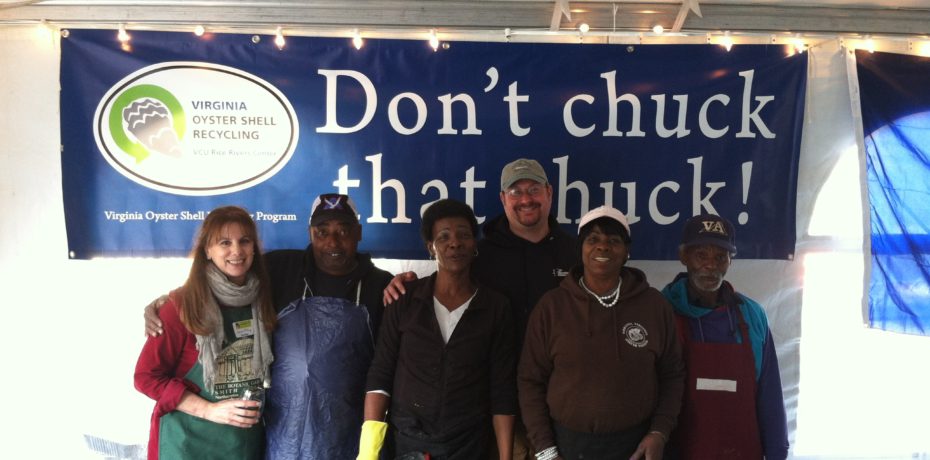There are loads of amazing restaurants in Virginia, whether you find one of the best restaurants downtown Charlottesville has to offer or go to Richmond for some seafood, you’re guaranteed to enjoy your food. And, as you pull up a seat at East Coast Provisions and order a platter of oysters, you’re doing much more than chowing down on one of Virginia’s tastiest assets. You’re playing a role in cleaning the state’s rivers and bays.
East Coast Provisions is one of many Richmond restaurants partnered with the VCU Rice Rivers Center and its Oyster Shell Recycling Program.
“We touch the shell during the whole cycle,” explains Todd Janeski, Director of the Oyster Shell Recycling Program at Virginia Commonwealth University’s Department of Life Sciences and Rice Rivers Center. “Those shells help maintain both the wild and the farmed oysters living and growing out there.”
It starts at restaurants, where the Rice Rivers Center and its team of volunteers and students plant recycling bins. They work to educate restaurant owners and staff to discard shells in these bins. They’re picked up later and then taken to the VCU Rice Rivers Center to be distributed to reefs in the Piankatank River, Rappahannock River and more. Restaurants like East Coast need Janeksi and his team to pick up shells twice a week, which is about 12-14 buckets. Lemaire, Burger Bach, Boathouse, and Stella’s are all part of the effort in Richmond. A full list of participating businesses is available on the program’s website.
The Oyster Shell Recycling Program has been growing throughout the state. An expanding list of 50+ restaurants and 30 public drop-off locations in Charlottesville, Richmond, Williamsburg, Newport News, Hampton, Norfolk, Suffolk, Chesapeake, Portsmouth, VA Beach and on the Northern Neck of Virginia are now part of the effort. Janeski says he’s focusing closely on the West End of Richmond as new restaurants take hold and grow in the area.
After shells make their way to bins at restaurants and public drop-off spots, VCU students and volunteers then collect shells. Anyone can join in on the effort to help with hauling shells across the state to their final destination.
After shells are collected, VCU students age them in storage for nearly a year. Then, the shells are placed in seeding tanks where spat (baby oysters) attach themselves to the shells. Each shell might help bring new life to 10 to 15 spat.
“We wanted students to have a tangible experience out in the community and throughout the state, but we had no idea this pilot project would grow so large,” says Janeski.
Oysters then make their way to the water in oyster sanctuaries like Ellery Kellum Rock in Carter’s Creek behind the Tides Inn in Irvington, VA. Here, the oysters have a job to do. One oyster filters 50 gallons of water each and every day. Cleaner water results in more oysters and wildlife can thrive in the Chesapeake Bay. As they grow and breed they also become a part of the “wild” oyster population that grow and thrive alongside “farmed” oysters in the region’s waters. It takes about three years for an oyster to mature. The process continues as oysters make their way back to our dinner plates at restaurants like East Coast.
Graduate student Ronald Lopez recently chronicled the entire process in the film, An Oyster’s-Eye View of the Virginia Oyster Shell Recycling Program. He won the RVA Environmental Film Festival at the Byrd Theatre on Feb. 11. Watch the video here to get his “oyster cam” perspective of the process.
Whether it’s eating at restaurants who support the program, volunteering or donating to the cause, Janeksi says it’s easy to make an impact.

